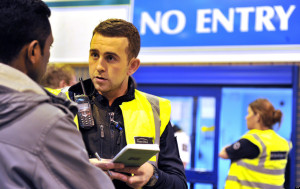The government’s target to cut net migration to the UK to below 100,000 by 2015 is neither a useful tool nor a measure of policy effectiveness, according to a new discussion paper by top academics.
Professor John Salt and Dr Janet Dobson, academics at University College London, published the report criticising the Coalition government for its policy of reducing net immigration to ‘tens of thousands’, a target that was seized upon after David Cameron, then the leader of the opposition, told BBC interviewer Andrew Marr in 2010, “We would like to see net immigration in the tens of thousands rather than the hundreds of thousands. I don’t think that’s unrealistic.” ‘Tens of thousands’ has always been taken to mean less than 100,000 a year. This ‘tens of thousands’ target became a manifesto commitment of the Conservative Party.
Although the Conservatives did not win an outright majority and were forced to enter into a Coalition with the smaller Liberal Democratic Party in order to govern, the government has committed itself to reducing immigration to below 100,000 a year by 2015, when the next general election will be held.
Net immigration is calculated as the difference between the number of people entering the country and the number leaving. Therefore, reducing net migration means reducing immigration, increasing emigration – or both. The target applies to all immigrants and emigrants, including British citizens and those from other countries in the European Economic Area (EEA), whose movements are for the most part beyond government control. The government has, consequently, focussed its policies almost entirely on Non-EEA citizens. Under the last Labour government in 2010, net immigration stood at about 250,000 a year.
Slowing decline
The Coalition government has introduced many changes to the UK’s immigration system and by 2012 had reduced annual net immigration to around 175,000 but the report says that this decline may have slowed or even stopped. The Coalition government has attempted to reduce numbers of immigrants coming in almost every immigration category. Among other changes it has:
Abolished the Tier 1 (Post Study Work) visa which allowed foreign graduates to work in the UK for two years after graduation
Abolished the Tier 1 (General) visa which allowed ‘highly skilled people (mainly graduates) to come to the UK and work
Introduced a cap of 20,700 on the Tier 2 (General) visa for skilled workers. (The cap is never reached but UK immigration has made it harder to qualify for the visa)
Barred over 600 English colleges from sponsoring foreign students for Tier 4 student visas
Prevented UK citizens who earn less than £18,600 a year from bringing their foreign born spouses to live with them in the UK
Easy hits
But the report says the changes are ‘easy hits’ and it is not easy to see where further big reductions will be found. The report continues, “If government action and other factors were to cause net migration to fall below 100,000 by 2015, it is not clear what happens next”. It also says that there is “evidence of collateral damage caused by action to cut work-related, student and family migration.” Examples of such ‘collateral damage’ are a loss of income to the UK’s export education sector caused by the loss of tens of thousands of students paying for education in the UK. There is also evidence that businesses are no longer able to bring skilled workers into the country to work on vital projects because of a tightening of the Tier 2 visa rules.
Blunt instrument
Salt and Dobson argue that the single target is a blunt instrument. They say “having publicised the target, a government is under pressure to prioritise its achievement over other considerations which may be in the national interest or the interests of individual citizens and to act hastily to reach it within the promised time-scale”.
The report warns that, in any event, the level of net immigration “is only partly determined by the UK government”. It says “The coming and going of British citizens, the decisions of other EU citizens, civil wars thousands of miles away, the migration policies of other countries and the state of the world economy are all factors (to name but a few) which can affect net migration figures and over which the government has little control.”
The report concludes that “what is required is a policy which does not focus on a single net migration target but one which strikes a balance between minimizing the economic and social costs of migration while maximising the benefits”.
It continues, “If governments wish to set targets for non-EEA immigration, they should be based on estimates for different migration streams – labour, student, family and asylum, each perhaps broken down into component parts rather than a single overall figure to be met regardless.”











